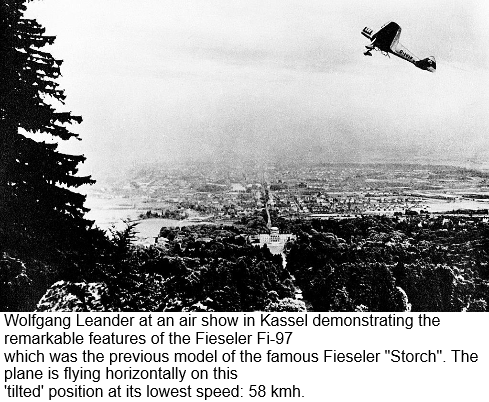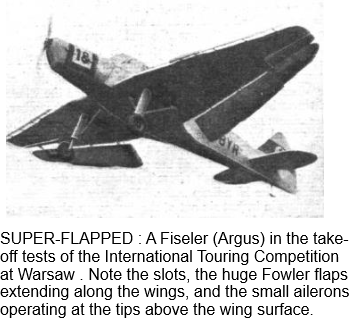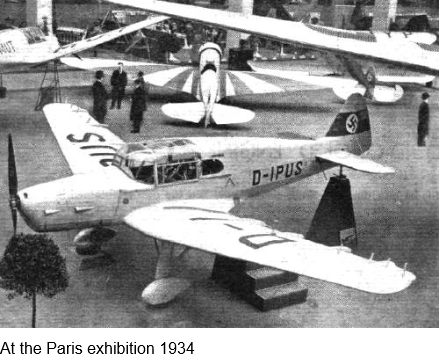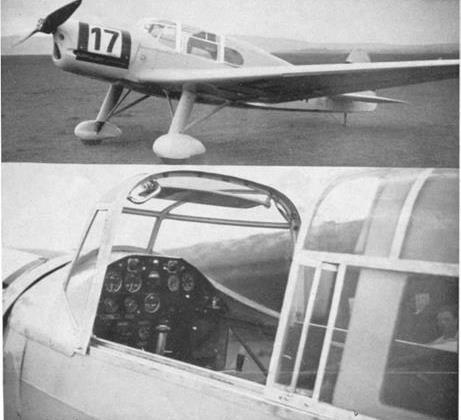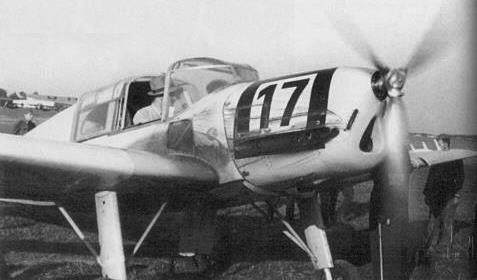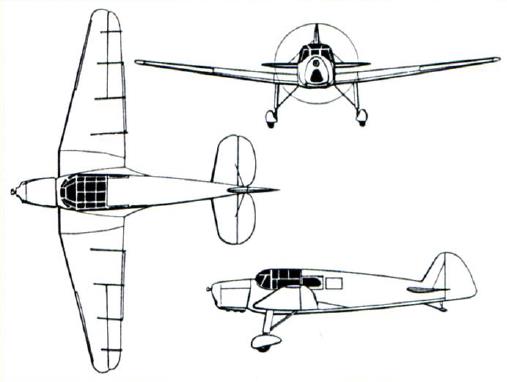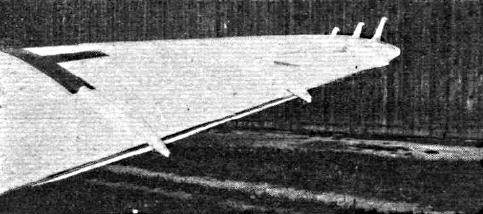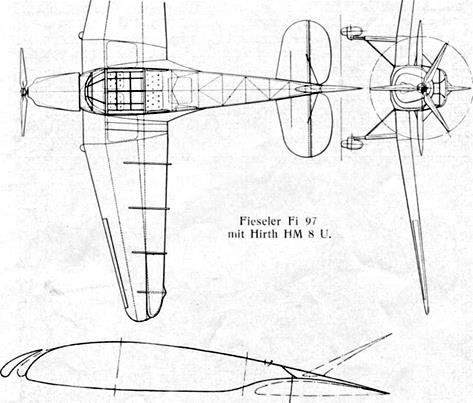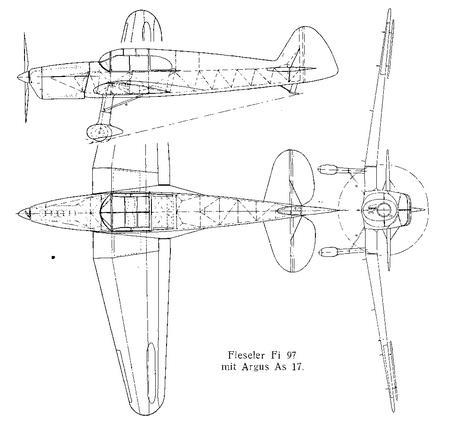Following the success of their two-seat tourer/trainer the Fieseler F5, Fieseler were encouraged by the German Reichsluftfahrtministerium (RLM) to develop a four-seat version specially to take part in the European touring plane championship Challenge 1934.
The result of this request was the Fi 97, designed by Kurt Arnolt. It was a mixed-construction low-wing cantilever monoplane with a conventional tail unit. The fuselage had a fabric-covered steel tubing frame. The wing structure was wood and was covered with fabric and plywood. The wings were able to be folded aft for storage or ground transport. The tailskid undercarriage was fixed. The pilot and three passengers had an enclosed cabin.
Five (7 ?) examples of the Fi 97 were built. Three aircraft were fitted with the Hirth HM 8U, 250 hp inverted V8 engine, and two used the Argus As 17A, 225 hp inverted 6-cylinder inline engine. Both engines are air-cooled.
The plane had STOL capabilities and the most significant design aspect was the wing's high-lift devices to enable the aircraft to be flown at low speeds. The leading-edge had Handley Page type automatic slats over more than half of the span. The trailing edge had Fieseler-designed Ausrollflügel, a Fowler-type trailing-edge flap. The trailing-edge flap increased the wing area by nearly 20%. These high-lift features allowed the aircraft to be controlled down to 58 km/h .
Five Fi 97s took part in the Challenge 1934 touring plane championship in August-September, and Hans Seidemann took third place in an Argus-powered Fi 97.. A significant achievement was that all the Fieselers completed the contest (places: 3, 9, 12, 13, 16), especially comparing to other German aircraft. Among pilots was also Wolf Hirth. Among others, they scored 1st and 3rd results in a short landing trial (best result - 75 m, from over 8 m-high gate) and very good results in a short take-off (78.3 m over 8 m-high gate) and minimal speed trial (58.49 km/h).
| Type |
4-seat sportplane |
| Engine |
1 Hirth HM 8U |
1 Argus As 17A |
| Dimensions |
Length 8,04 m, height 2,36 m, wingspan 10,70 m, wing area 15,30 m2 |
| Weights |
Empty 560 kg, loaded , max. take off weight 1050 kg |
| Performance |
Max. speed 245 km/h, range 1200 km, service ceiling 7300 m, rate of climb 5,6 m/sec. |
| Type |
Werk.Nr |
Registration |
History |
|
|
D-IJIF |
|
|
|
D-IJIP |
|
|
|
D-IBYR |
Argus engine . Took part in the Challenge 1934 , competition number 18, pilot Bayer |
|
|
D-IPUS |
Argus engine. Took part in the Challenge 1934, competition number 19, pilot Hans Seidemann, third place |
|
|
D-IDAH |
Hirth engine. Took part in the Challenge 1934. competition number 22, pilot Pasewaldt |
|
|
D-IVIF |
Hirth engine, Took part in the Challenge 1934. competition number 17, pilot Hirth |
|
|
D-IZUH |
Hirth engine, Took part in the Challenge 1934. competition number 21, pilot Hubrich |
